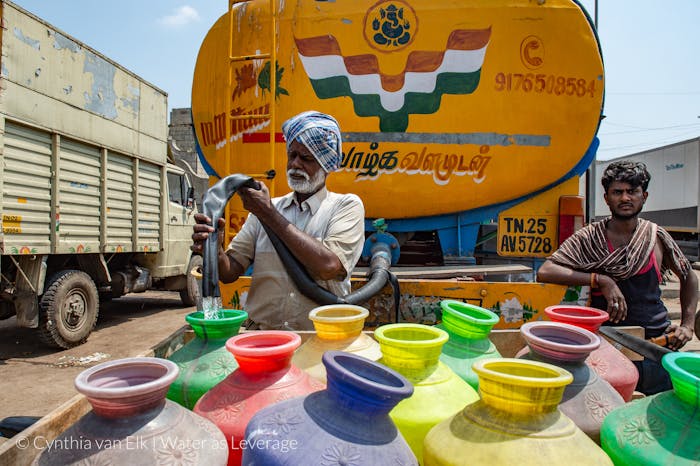Chennai: A Lake Metropolis by the Sea
Chennai could be called 'the rainwater capital of the world.'
Situated at the mouth of the Cooum River, Chennai lies on a coastal plain that stretches from southeast India to Bangladesh. Two other rivers cross the city: the Adyar River in the south and the Kosasthalaiyar River in the north. Over 300 ponds and tanks collect massive quantities of rainwater throughout the city, comprising the ingenious Erys system designed to store water supplies during the annual monsoon season. The 700-km long Buckingham canal connects the three rivers in Chennai. Though it no longer functions as a transportation route as was originally intended, it remains an important feature for regional rainwater discharge.
Chennai’s water systems – both natural and engineered – have been subsumed by its expanding urban fabric, resulting in a range of environmental and social problems. Rapid urbanization and overexploitation of natural wetlands have outpaced the capacity of the water provision and drainage systems in place. Industrial pollution and solid waste disposal seriously threaten the city's water bodies and have made local freshwater supplies largely unsuitable for consumption, irrigation, and bathing. In addition, about 40% of the coast of Chennai is currently threatened by erosion caused by sea level rise, changing sea currents, and hard coastal defenses such as dikes and dams.
Moving forward, Chennai must address these issues of pollution, waste and erosion to create a resilient water system for its inhabitants. If it does so, Chennai can once again become a frontrunner on urban water management.

 03 Good Health and Well-being
03 Good Health and Well-being
 06 Clean Water and Sanitation
06 Clean Water and Sanitation
 09 Industry, Innovation and Infrastructure
09 Industry, Innovation and Infrastructure
 11 Sustainable Cities and Communities
11 Sustainable Cities and Communities
 13 Climate Action
13 Climate Action
 15 Life On Land
15 Life On Land
 14 Life Below Water
14 Life Below Water